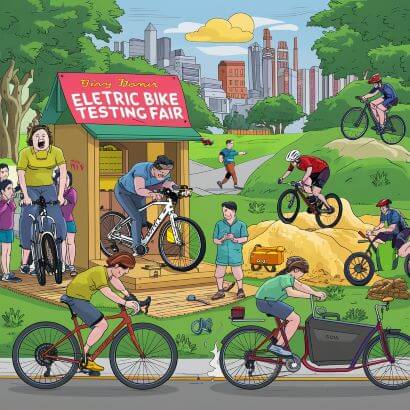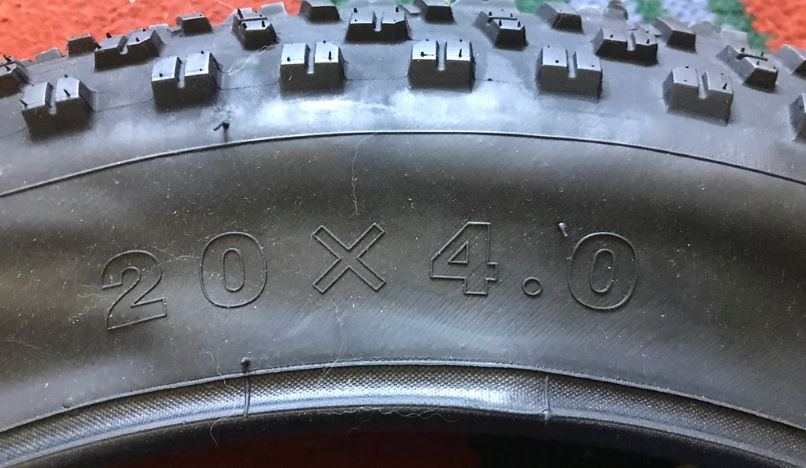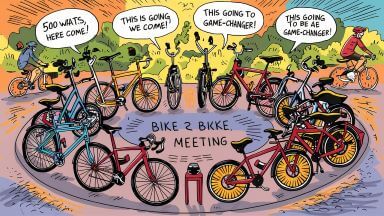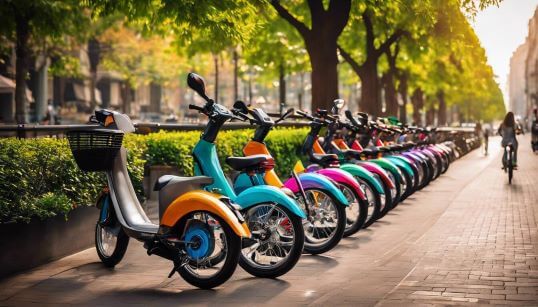Choosing the right electric bike isn’t rocket science, but with all the choices out there, you’d be forgiven for thinking you’d wandered into a NASA lab instead of a bike shop! You’ve got mountain e-bikes for the adventurers who think a good time involves mud and bugs, road e-bikes for those who zip through traffic with the smugness of bypassing a petrol station, and Fat Tyre Bikes – because nothing screams ‘I lift’ like a bike that looks like it’s on steroids.
Finding the right e-bike is like matchmaking – it’s about finding that sweet spot where your wallet doesn’t have a meltdown. With prices ranging from ‘Is that all?’ to ‘Should I start a GoFundMe?’, it’s all about the balance. It’s not just about snagging the shiniest bike in the shop; it’s about finding one that fits your life. Are you scaling mountains, commuting, or just nipping out for some milk? Does the battery last longer than your enthusiasm for exercise? Give a few a test ride, grill the experts, and you might just roll out with your two-wheeled soulmate. And hey, if you’re still puzzled, read my ramblings or send me a funny message – I might just use it to spice up this page!

How much do you want to spend?
- Research Average Costs: Look up prices for different types of e-bikes that meet your criteria to understand the price range. Entry-level e-bikes can start from a few hundred dollars, with high-end models going up to several thousand.
- Set a Price Range: Based on your research, define a realistic price range that reflects both your minimum and maximum spending limits, and how much you have to put towards it.
- Account for Additional Costs: Include extra expenses such as accessories (helmets, locks, lights), maintenance, insurance, and potential battery replacement in your budget
- Prioritize Must-Haves: Decide which features are essential and which you can compromise on to stay within budget
- Study UK e-bike Law: Remember most bikes in the UK are pedal assist by law and do not have a throttle, there may be a change in the law on this, more here and have a 250-watt motor legal limit.
Go on test rides if you can!
I bought my first bike on Amazon a Moscow 48v I really had no idea how good ebikes were, I was pretty lucky it is a great bike, but if you are not sure take up some of the free ride options, Halfords places like this allow you to borrow and test ride bikes, just go out and get on one.
Be sure that it is really going to fit your needs as it is an expensive item to leave in your shed not being used, if you are not sure don’t buy one until you really know what you want, but also understand there is no magic ebike wonderland.
Most bikes will be pedal assist in the UK they will not have a throttle.
Hire an e-bike!
There are loads of places to hire these types of bikes, my optician was saying he hired them on holiday, and he said it was amazing, I know it costs money, but at least you know what you will want when you come to buy one. I speak more about this on the cycling tourism page.
Identify the Right Bike Type for You
I need you to know there is no perfect ebike all have plus and minus points but selecting a type will at least narrow down some of your options if you can select one or two of the following, otherwise, you are going to be so confused it will be impossible to choose the right bike then go have a look at some real bikes in shops as choosing the perfect bike does become a bit easier when you narrowed down the options and sat on a few real bikes.
Small Bikes
Now, small electric bikes are like the starters at a fancy restaurant – they look appealing and are great for a quick spin, but they won’t take you far. Think of the Ouxi V1 or the Engwe T14. They’re nifty for zipping around town, as long as you’re not a giant. If you’re over 6ft, riding one might feel like you’re a clown at the circus.
Medium bikes
These are the ‘middle children’ of electric bikes. Not too big, not too small, just…medium. Take our eco-friendly bike, for example. Perfect if you live in a shoebox apartment and need a bit more juice than what the little ones offer. They’re like the porridge Goldilocks settled on – just right unless you’re saving up for a sports car.
Mountain bikes
Ah, the mountain bikes! These are the SUVs of the biking world. Big, rugged, and comes in more varieties than a supermarket cereal aisle. But be warned – the hunched-over riding position might turn your back into a question mark. If your spine is precious to you, you might want something a bit more upright, with lots of battery options and lots of different looks very flexible.
Racing/Road bikes
These are the speed demons of the bike world. Slim, sleek, and built for zipping through traffic like you’re late for a date. But remember, comfort is usually traded for speed. Great for feeling the wind in your hair, not so great for leisurely Sunday picnics., tend to have really small batteries but are very light.
Hybrid bikes
The hybrids are like those fancy fusion restaurants – a bit of this, a bit of that. They combine the speed of a racing bike with the comfort of a city bike. Ideal for those who can’t make up their mind or just want a buffet of biking experiences.
Fat Tyre bikes
These are the monster trucks of bikes. With tires fatter than a sumo wrestler, they’ll roll over anything – snow, sand, maybe small cars. Great for making a statement, just don’t expect to blend into the crowd. Built like a tank lots of battery options and great fun to ride but very heavy!
Cargo Bikes
Finally, cargo bikes are the pack mules. Need to move a sofa, a couple of kids, and a week’s worth of shopping? No problem. They’re practical, but you might feel like you’re pedalling a small bus. Great for urban hauliers who like a workout, made for long marathons to the shops or touring.

The takeaway from this
Once you decide on the type of bike you want, decide what you are going to use it for, this will enable you to estimate the distance you may need the bike to cover, thus allowing you to select the appropriate battery size, the bigger the battery the more expensive the bike, so try to choose the right size battery for your needs.
Don’t just say well I want a bike that does 30 miles per day if you are only doing 10 miles commute, because most journeys on a bike are around 5-10 miles, and you will be paying a lot extra for a bike that does that kind of distance that you will probably hardly ever use or need.
As you can see the many different electric bikes all have different sizes as well as different controllers, different LCD display, and different motors, and you may want to go with one of the big brand ebikes from the UK if you are worried about warranty and reliability, but this increases the cost, online bikes are cheaper but usually, you won’t know the brand,
Plus little extras like having a colour display cost a little extra, so all these little extras add up, you just have to decide what is important to you, speed, battery size? selecting the right option can be overwhelming.
Just about all these types of bikes have multiple uses, all can be used for a commute it just depends on how far you are commuting to, it depends how you want to use the e-bike we can speak about this further down
- A study published in 2017 found that most electric bikes have a top speed of around 20 mph with a range of 10-30 miles.
- According to a survey conducted by Bike Europe, about 40% of consumers who bought an electric bike cited the ease of use as one of the main reasons for their purchase.
- According to research conducted by Future Market Insights, sales of electric bicycles are estimated to grow at a CAGR (compound annual Growth Rate) of 15.1%, reaching over $17 billion by 2027.
How Will You Use an E-Bike?
To make the right choice, you need to know what you are going to be using it for. this can help you to select the appropriate size battery, remember you have to plan for charging your electric bike, it will not run for ever on one charge.
As commuters or utility cyclists, the way you plan to use your electric bike should be your priority when considering what type to get. You will be relying on your electric bike for daily activities and transportation, so it is important that you pick the right one for your lifestyle. For instance, if you are looking for an electric bike mainly for errands around town, a step-through frame with a lower centre of gravity would provide the most comfortable ride. However, if you plan on doing more off-road cycling, a mountain-style frame with deeper tread tyres can help tackle any terrain.
No matter what style of riding you plan to do, safety features and security systems should also be taken into account. Anti-lock brakes can help reduce the risk of a crash, while integrated lighting can increase visibility during night commutes. Additionally, some companies offer protection plans that provide coverage against theft and damage which could come in handy in case of an accident or burglary.
Once you have figured out how exactly you plan to use your electric bike it is beneficial to think about the speed and range requirements that will best meet your needs. If you travel relatively short distances in an urban setting with lots of starts and stops, then less speed and range may suffice. Alternatively, if you make longer trips or go up hills throughout your commute then more power may be necessary. Consider all these factors before going forward to find an electric bike that best fits your needs and lifestyle.

Range, Assistance and Ride Quality
When choosing an electric bike, understanding its range, assistance levels, and ride quality can make all the difference in finding the perfect match. Let’s break down each aspect to provide a comprehensive grasp of what to look for when considering an e-bike.
Range
For most riders, the range of an electric bike is a critical consideration as it determines how far you can travel on a single charge. Factors such as the capacity of the battery, the level of assistance used, and the rider’s weight can influence the range. High-quality e-bikes often boast an impressive range of 50-150 miles on a single charge, making them ideal for long-distance commutes and leisurely rides through scenic trails, remember these bikes need charging so don’t overlook this.
When thinking about range, it’s important to consider your typical riding habits. Are you planning to use your e-bike for daily commuting or more extensive weekend adventures? Understanding your regular riding distance will help you gauge which e-bike will suit your lifestyle best.
Assistance
Electric bikes offer various levels of pedal assistance, typically ranging from eco mode (providing minimal assistance) to turbo mode (providing maximum assistance). The level of assistance allows riders to tailor their riding experience based on terrain difficulty or personal preference. The different assistance modes afford flexibility, enabling riders to conserve battery life by using minimal assistance during easy rides and maximising support during steep climbs or challenging terrains.
Notably, higher levels of pedal assistance in e-bikes do not diminish the workout experience; instead, they offer additional support when needed, making uphill climbs and longer journeys more manageable.
Ride Quality
One remarkable feature of electric bikes is their ability to provide a smoother and more comfortable ride compared to traditional bicycles. The electric propulsion system assists riders in navigating long distances and challenging terrains with ease. This enhanced comfort makes e-bikes an excellent option for individuals seeking greater mobility without compromising on ride quality.
Imagine effortlessly gliding up steep hills with minimal exertion or enjoying a comfortable cruise along uneven roads these are just some scenarios where the superior ride quality of e-bikes shines through.
Understanding these core aspects range, assistance options, and ride quality lays a solid foundation for identifying an electric bike that aligns perfectly with your specific riding requirements.
Unless you are planning to build or customise the bike I would not worry too much about, what controller the bike has or what brakes unless you really are going to change stuff on the bike to a high level.
Responses to Common Questions with Explanations
What factors should I consider when choosing an electric bike?
When choosing an electric bike, there are several factors to consider. Firstly, determine your riding needs and preferences, including distance, terrain, and desired speed. Secondly, look into the bike’s battery capacity and range to ensure it can meet your usage requirements. Additionally, consider the motor power and type, as well as the frame style and size for comfort and stability. Finally, compare prices and warranty options to make an informed decision. According to a survey conducted by Consumer Reports in 2023, the top three factors that influenced electric bike purchases were battery range (42%), motor power (36%), and price (22%).
Are there specific features or specifications to look for in an electric bicycle?
Yes, there are specific features and specifications to consider when buying an electric bike. Firstly, look for a bike with a powerful motor that suits your needs, as the motor is responsible for providing pedal assistance. Secondly, consider the battery capacity and its range to ensure it meets your commuting or recreational requirements. Additionally, check the bike’s weight capacity, as it should comfortably support your weight. Finally, make sure the bike has quality brakes and suspension for safety and comfort during rides. According to a survey by eBike Generation, 67% of electric bike buyers prioritise motor power and battery range when making their purchase decision, while 24% consider weight capacity and 9% focus on braking and suspension systems.
What price range should I expect when looking for the best electric-bike?
The price range for electric bikes can vary widely depending on factors such as brand, features, and quality. On average, you can expect to spend between $1,000 and $4,000 for a good quality electric bike. However, premium models with advanced features can cost upwards of £10,000. It’s important to consider your specific needs and budget when choosing the best electric bike for you. You can get small bike for cheaper and even second-hand bikes are worth exploring if your budget is limited.
Are there different types of electrical bikes available? Which one is suitable for my needs?
Yes, there are different types of electric bikes available to suit your needs. The most common types include city/commuter bikes, mountain bikes, folding bikes, and cargo bikes. City/commuter bikes are ideal for everyday commuting in urban areas, while mountain bikes are designed for off-road adventures. Folding bikes provide convenience and portability for those with limited storage space, and cargo bikes are perfect for carrying heavy loads or transporting children. Consider factors such as terrain, distance, and intended use when choosing the best electric bike for you. According to a survey conducted by Deloitte in 2023, 63% of e-bike owners prefer city/commuter bikes for their daily transportation needs.
I'm the passionate mind behind this online web shop. As an avid cyclist, I have a particular fondness for electric bikes and scooters, believing they offer a unique sense of freedom and joy. Not only do I enjoy riding them, but I also take pride in reviewing and sharing my insights about these fantastic machines. Additionally, as someone who suffers from dry eyes, I'm committed to stocking products that genuinely enhance and improve people's lives. Dive into my shop, and you'll find a curated selection of e-bikes, scooters, and other life-enhancing products that I stand by.






